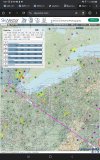Matthew
Touchdown! Greaser!
The best way to prepare for a flight to a new area:
Is the weather good?
Is the airplane good?
Is the fuel level good?
Am I good?
Fly to a new area.
—
Seriously, though, sometimes there can be some complicated airspace so study the charts and plan a way through or around it.
This isn’t much different from the long cross country we all did.
Is the weather good?
Is the airplane good?
Is the fuel level good?
Am I good?
Fly to a new area.
—
Seriously, though, sometimes there can be some complicated airspace so study the charts and plan a way through or around it.
This isn’t much different from the long cross country we all did.


